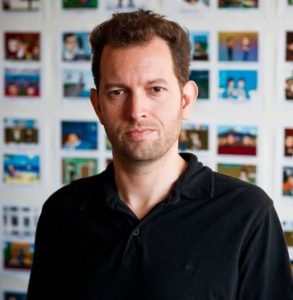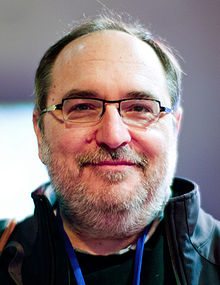Dom Hofmann : The Founder of Vine “A 6 Second Entertainment App”
In this era, where everything is becoming instant and fast, everyone wishes that their entertainment also becomes very instant, quick. Besides, these days, in the hectic schedules, who has the time to take out an hour to watch a TV show or a live comedy show to please themselves. People wish that their source of comedy becomes shorter and shorten in the time perspective and holds enough interest that cam amuses them. Such was the vision of Dom Hoffman when he built the app Vine which turned out to be a wide success all over the world and gained a fan base very much faster than ordinary start-up apps.
So, “What makes Vine so special?” you may ask. The standout in this app was that it made short videos. And by short, I mean, indeed very short! It produced not more than 6-second videos. This was something ‘new’ to the entertainment industry, which shook it! People went nuts over Vine because it brought a sense of an innovational challenge to make fun and creative videos in a time period of just 6 seconds.
Dom, born on 27th September 1986, is what we can say a creative entrepreneur. He created ‘Vine’ with his partners, Rus Yusupov and Colin Kroll. He feels, Vine becoming the internet’s most chosen video making tool, was rather an ‘accident’. He said that they imagined the tool would help people capture small moments of their lives  and share them with their friends.
and share them with their friends.
Vine was founded in June of 2012 and before even the official launch, Twitter bought it 30 Million $. The microblogging site, Twitter, thought of it as the perfect combination to its ‘short’ text way of socializing. The videos made by tool were published through the Vine’s social network and could be shared on other social media platforms such as Twitter and Facebook. Vine is short of Vignette which is defined as a short impressionistic scene.
The tool was launched on 24th January 2013. In this, the videos could be surfed in accordance with theme, trending etc. It gave a tough competition to Instagram and Mobli.
“It became pretty clear as soon we launched it”, said Hofmann as the app gained a huge user base in just the span of less than 2 years. By December 2015, the tool had already surpassed 200 million active users. He (Dom), was surprised and excited about the way that people were using the app in strange ways. “Watching the community and the tool push on each other was exciting and unreal, and almost immediately it became clear that Vine’s culture was going to shift towards creativity and experimentation,” he said. Vine’s symbol displays an inverted 6 if you look at it closely.
But it eventually came to an end, when Twitter announced that it would be shutting down the Vine app on October 27, 2016. But Twitter said that viewing and downloading vines would continue. On January 20, 2017, Twitter launched an archive which contained all the previously captured vines.
Some of the reasons listed by the Vine community for the shutting down of Vine services were that Twitter’s own uncertain future in social networking and also the increasing competition from Snapchat which rolled out 10 seconds clip service to broadcast in the app itself.
Dom, even after the closing down of the app, did not close on the Vine community. He has been tweeting recently about ‘Byte’, the successor of Vine. Byte’s logo was tweeted by Dom on November 9th, 2018, and said that ‘Byte’ could be launching anytime soon in the Spring of 2019. The successor of Vine was supposed to come out early but Hofmann said that it was due to some “financial and legal issues.” He also said that ‘Byte’ would function independently and not under Twitter.
Vine was viewed by the users as both creative and monetary. Some of the famous Vine artists are Zach King, the magician who earned more than 1.4 Billion views. Other than this, Amanda Cerny, Logan Paul, Meghan McCarthy, Dwarf Mamba and KingBach. You can also check Vine compilations on YouTube.
Dom Hofmann showed us that entertainment does not need two-three hours of time. Even a small amount of time is sufficient enough to show one’s creativity and bring a smile on to people’s faces. He, in one way or the other, made us realize that happiness can be found even in the splits of seconds. The 6-second entertainment inventor is all prepped up to bring another entertainment app soon.

Raghav is a student and a content writer. He loves to write about emerging as well as the existing technologies around and about the ones who bring them to you. Music is the other passion that Raghav processes. It is like the fuel to his body. He is also in writing songs and poems. He believes that life is short, so live the best out of what you have got. Raghav considers himself a sci-fi guy, having stories and tech all around in his head, all the time.





